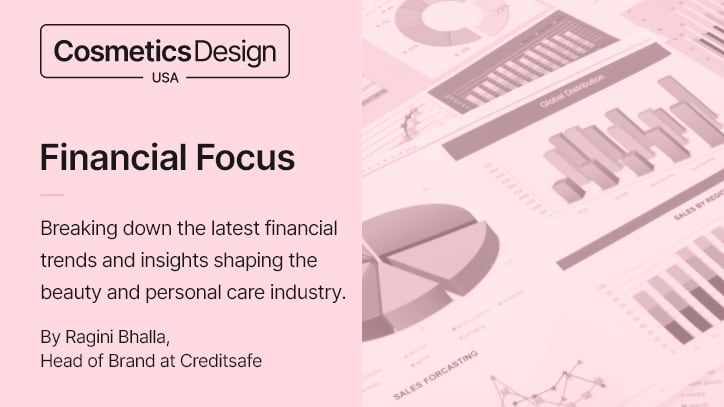[ad_1]

Welcome to the December edition of Financial Focus, where we analyze the financial strategies shaping the success of leading cosmetics and personal care brands. This month, we spotlight E.L.F. Cosmetics, a brand that has redefined affordable beauty while maintaining remarkable financial health and multi-generational appeal.
As someone who loves all things makeup and skin care, E.L.F. Cosmetics is a brand I’m very familiar with. They’re best known for creating affordable dupes of high-end products.
And the quality is often better than the original, higher-priced items they’re duping. This is the niche business model they own – and they do it exceptionally well.
But there are other things they’re doing well too. In its latest second quarter fiscal 2025 earnings results, E.L.F. reported that they delivered 40% net sales growth. This growth was attributed to their strong sales in retail and ecommerce channels – both in the US and internationally.
At the same time, the company’s gross margin increased to 71% in Q2 FY2025, driven by cost savings, favorable foreign exchange impacts and price increases in the company’s international markets.
While these numbers are certainly favorable, there’s more to why E.L.F. has been so successful.
It comes down to a combination of judicious financial management, respect for its suppliers and strategic expansion plans.
E.L.F. recognizes its suppliers are critical to financial success
A cosmetics brand is only as strong as its suppliers and vendors. And E.L.F. recognizes this.
The suppliers and vendors are the ones providing the materials, manufacturing E.L.F.’s products, running testing on the products, among other things. Without them, E.L.F. wouldn’t be able to churn out so many product launches every year – with most doing exceptionally well in the market.
But for these suppliers and vendors to be able to do their jobs and deliver what they need to E.L.F., they’ll need to get paid on time by E.L.F. and other customers. As Creditsafe data reveals, E.L.F. has a strong track record of paying its suppliers on time.
For example, the brand’s Days Beyond Terms (DBT) – how late they pay their bills – ranged from 2 to 6 between November 2023 and September 2024. This is very low.
Let me put this into context. Let’s say one of E.L.F.’s suppliers and E.L.F. have agreed to a Net 30 payment terms – this means E.L.F. typically pays its suppliers only a few days late at most and typically pays its suppliers on time.
It’s also worth noting that E.L.F. tends to pay its suppliers faster than other cosmetic brands. Creditsafe data reveals that the industry average DBT was 9 and E.L.F. managed to stay below that for the last 12 months.
In addition, in May 2024, E.L.F. achieved an exceptional payment rate, with 68% of invoices paid within the current cycle, while November 2024 showed nearly 84% of outstanding invoices in the current category. Financial steadiness reduces risk and optimizes cash flow, allowing E.L.F. to focus on strategic investments and sustain stakeholder confidence.
Marketing investment has been supported by the C-suite
As someone who has spent her career in marketing, I can tell you how important marketing is to achieving sales and revenue targets. But it’s not about doing one-off tactics and the same thing everyone else is doing.
It requires a significant investment, a clear strategy that is centered around the company’s long-term goals and a driven team who can bring that investment and strategy to life. E.L.F. has mastered this.
According to their recent earnings call, E.L.F. allocates 24–26% of sales to marketing with the goal of maximizing the company’s reach and appeal. CEO Tarang Amin highlighted the ROI of these efforts, which not only make E.L.F. the leading brand among Gen Z but also resonate deeply with millennials and Gen Alpha.
E.L.F. employs disruptive marketing campaigns that blend creativity with authenticity. From viral TikTok challenges to collaborations with influencers, their efforts capture attention while reinforcing the brand’s reputation for affordability and quality. This approach helps keep E.L.F. top of mind, even as consumer preferences shift.
Being cautious about spending and retail expansion strategy is paying off
If you’ve ever walked into a Target, CVS, Walgreens or Dollar General store, you’ll notice that most E.L.F. products are available. This is a smart move.
Rather than launch their own E.L.F. stores – and be saddled with the financial burdens of leases, merchandising, staff – the brand is taking advantage of retailers that already have a strong market share among consumers.
In its Q2 FY2024 earnings call, Rick Gomez, Executive Vice President and Chief Commercial Officer for Target, said that the company has been experiencing consistent sales growth in the beauty category. Earlier this year, E.L.F. said that CVS would more than double its shelf space for E.L.F. products in spring 2024. And Walmart was making similar plans to increase shelf space for the E.L.F. brand in summer 2024.
When you look at this from a strategic perspective, it makes perfect sense. E.L.F. can reap the rewards without taking on too much risk for themselves.
Another area that E.L.F. is being cautious about is its supply chain. At one point, E.L.F. outsourced production of 99% of its products to Chinese suppliers. But this caused problems for E.L.F. in the past – include example of supplier issues.
By relying on a small group of suppliers in a single country, brands like E.L.F. could find that suppliers shut down to political issues, factory strikes or natural disasters. In such cases, the company would then be left with manufacturing orders that couldn’t be filled – forcing it to scramble and find replacement suppliers, which could end up costing more and lead to lost customers.
This is likely why E.L.F. now only outsources 80% of its manufacturing to Chinese factories now.
Additionally, with 21% of its net sales now coming from international markets, up from 16% a year ago, E.L.F. is further diversifying its revenue streams. Their focus on clean beauty and sustainable packaging is a testament to how they operate – always putting the needs of their buyers first and shifting their approach based on consumer attitudes and pain points.
What cosmetics brands can learn from E.L.F. Cosmetics
You might be thinking – how is a brand known for duping high-end cosmetics products doing so well? While E.L.F. doesn’t play it safe with its product launches and marketing campaigns, it takes a more cautious approach to its finances.
But this is a good thing. Rather than trying to launch its own retail stores, it has taken advantage of the retail spaces that its target audience already visits regularly – in places like Target, CVS and Walgreens.
And by being a reliable on-time payer, the company has likely been able to build a strong rapport with its suppliers. And in turn, this has likely helped them when it comes to getting their orders produced and delivered on time.
When orders are produced at a high quality and delivered in full and on time, then customers will be happy and more likely to come back and spend more money. And it’s not just about how paying suppliers on time has improved E.L.F.’s relationship with them; it’s also how that has likely improved E.L.F.’s likelihood of securing financing if needed.
To learn more or for questions you can email me at Ragini.Bhalla@creditsafe.com or reach Creditsafe on LinkedIn.
[ad_2]
Source link

